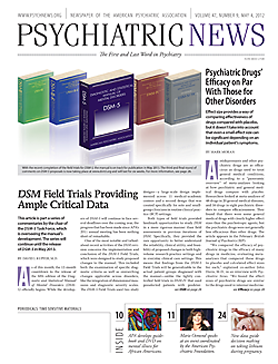Life imprisonment without parole for juveniles convicted of murder represents a “constitutionally disproportionate punishment.” That is the position of APA, the American Psychological Association, and the National Association of Social Workers in an amicus brief to the Supreme Court supporting a pair of cases brought by two men sentenced to life without parole for their involvement in separate murders at age 14.
Evan Miller of Alabama was convicted with another juvenile in the 2003 murder of a 52-year-old neighbor, while Kuntrell Jackson of Arkansas received a life sentence without the possibility of parole for his participation in an attempted robbery in which one of his two juvenile accomplices killed a 28-year-old clerk at a video store in 1999.
Despite the severity of these crimes, the amicus brief’s cosigners maintain that two earlier rulings made by the Supreme Court establish precedence for barring life sentences without the possibility of parole for the plaintiffs in Miller v. Alabama and Jackson v. Hobbs.
In 2005, the high court ruled in Roper v. Simmons that imposition of the death penalty on felons who were under age 18 at the time of the offense was unconstitutional (Psychiatric News, August 20, 2004). And in Graham v. Florida in 2010, the court extended its analysis to exclude the use of life sentences without parole for nonhomicide crimes (Psychiatric News, June 18, 2010).
In both cases, the Supreme Court found that there are “critical differences between juveniles and adults that … do not absolve juveniles of responsibility for their crimes, but that do reduce their culpability and undermine any justification for definitively ending their free lives,” the brief states.
Specifically, the court noted that juveniles are less capable of mature judgment than adults, are more vulnerable to negative influences, and have a greater capacity for change and reform than adults do.
APA and the other amici emphasized that recent research on adolescent brain development shows that “even in late adolescence, important aspects of brain maturation remain incomplete.”
Accordingly, the brief’s cosigners argue that the “special characteristics of juveniles” identified by the Supreme Court in its earlier rulings should be applied equally to juveniles convicted of homicide offenses.
“Since the Supreme Court has already ruled that life without parole for juveniles convicted of lesser crimes is cruel and unusual, we urge the court to extend that ruling to murder defendants as well,” said Paul Appelbaum, M.D., the Dollard Professor of Psychiatry, Medicine, and Law at Columbia University, chair of the APA Committee on Judicial Action, and a past APA president. “At the very least, life prisoners who committed crimes as juveniles deserve the chance to demonstrate that they have matured sufficiently that they no longer represent a threat to society and if released are likely to make a positive contribution to the world.”
The Supreme Court heard oral arguments in both cases on March 20, with a ruling expected by the end of June.
“The oral arguments were fascinating,” child psychiatrist David Fassler, M.D., a clinical professor of psychiatry at the University of Vermont and APA treasurer, told
Psychiatric News. “Most of the justices acknowledged that ‘kids are different,’ but there was less agreement about exactly what this should mean in terms of sentencing for juveniles convicted of serious crimes. Several of the justices were clearly troubled by the imposition of mandatory sentences. There was general consensus that juveniles should at least have an opportunity to present potentially mitigating information prior to sentencing.”

